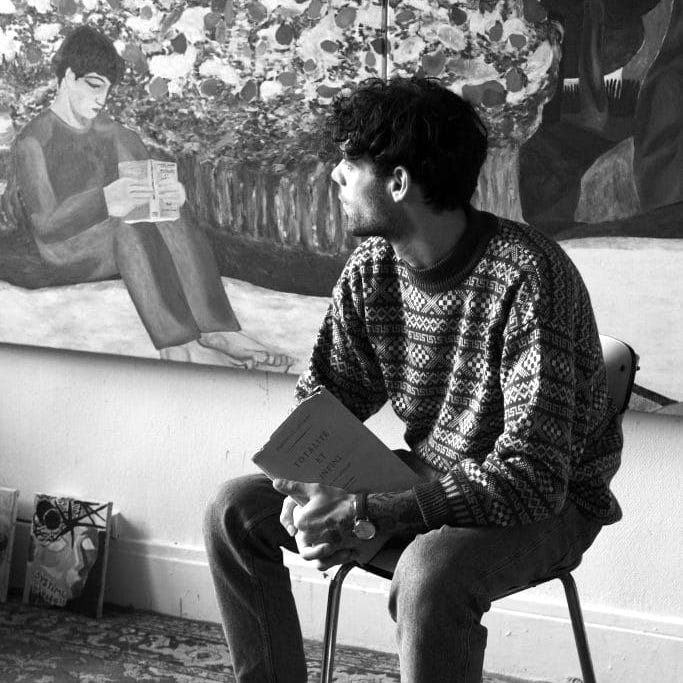Ivan Arlaud’s paintings evoke the happiness of life and a warmhearted and sunny atmosphere through his various interior scenes. If the human figure is totally absent, the scenes do not lack intimacy thanks to discrete clues: there, a steaming cup of coffee, here, a poetry book. In fact, it is an invitation to leisure and rest that the painter offers us. The viewer is invited to take place at the table, in front of a mysterious guest. Ivan Arlaud sets the scene, and it is for us to imagine its narration. These interiors, certainly empty, still recall the comfort of one’s home that was just left or about to be found again: the barely eaten fruit, the warm coffee, the book of poetry laid carelessly on a nonchalantly unfolded tablecloth … The warm and vivid colors enhance this solar aura. Ivan Arlaud masters its palette and juxtaposes shades in order to form luminous colorful oppositions. Here, the burgundy of the tablecloth rubs shoulders with the rich blue of the sea, and there the orange flowers blend with the pastel wallpaper. Ivan Arlaud got this talent for mastering colors from Henri Matisse, for whom “a single tone is only a color, two tones is a chord, it’s life”. In fact, the painter does not hide his admiration for the master that he quotes in Nice, in which the art book, the colored contrasts, and the patterned textiles strongly evoke Matisse’s work. Moreover, the opened window motif, which we know dear to the french master, is often used by the emerging painter.
Ivan Arlaud picks his subjects from his daily life. He appreciates photography, and his paintings are poetic transcriptions of captured images. His taste for poetry and literature shows through his work, wherein poetry interacts with refinement. If he sometimes cites Matisse, Cézanne’s still lives are also convoked. The perspective shortcut of the fruit basket in Choix de Poèmes, as long as the tablecloth is treated in geometric planes, recalls the famous lesson of the painter: “Treat nature by the cylinder, the sphere, and the cone”.
In 1917, Georges Braque, eminent inventor of cubism, wrote in his Thoughts and Reflexions on painting that “the goal is not the concern to reconstruct an anecdotal fact, but to establish a pictorial fact”.
Besides having a dreamlike aura, Ivan Arlaud’s paintings are made as full-fledged pictorial spaces, in which the folded-down perspective, and the formal elements – lines, colors, shapes – come together in a harmonious consensus.
About his work, Ivan Arlaud explains “I perceive painting as the creation of an intermediate space in which the artist shapes an imaginary, and in which the viewers can take place with him. This space has no limit; it has the appeal of a dream.”
Inès Molière

